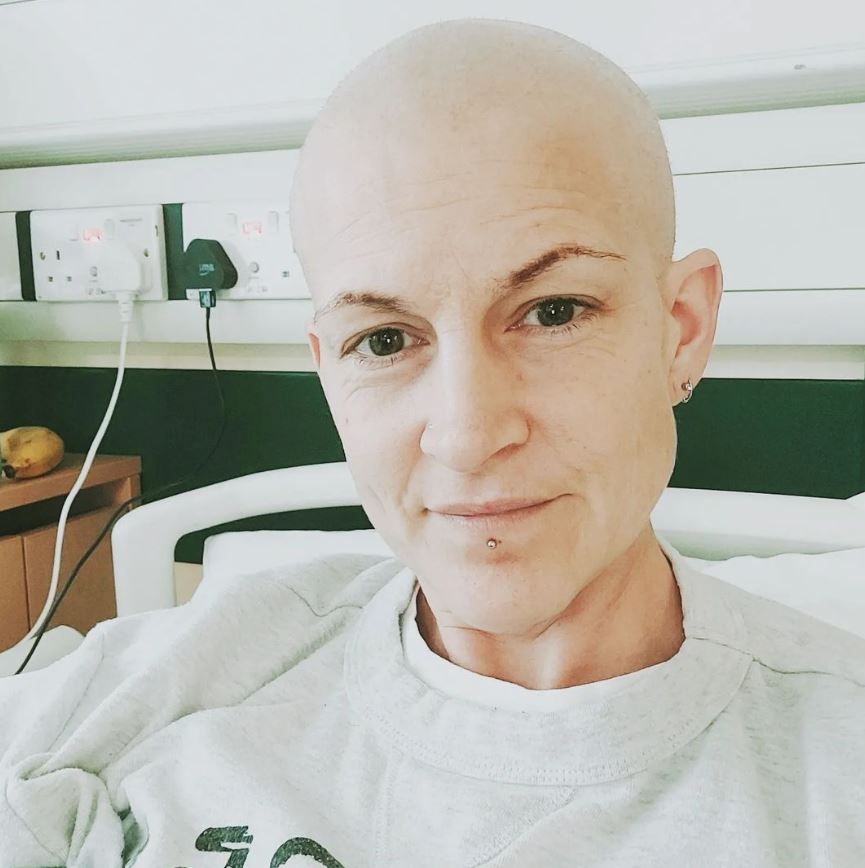Cervical Cancer 101: Understanding Causes, Types, and Stages

Welcome to our comprehensive overview of cervical cancer. In this guide, we will explore the symptoms, signs, screenings, causes, and treatment options for cervical cancer. Whether you want to learn about early warning signs or understand prevention and survivor rates, we’ve got you covered.
- Cervical Cancer 101: Understanding Causes, Types, and Stages
What is Cervical Cancer?
Cervical cancer refers to the development of cancerous cells in the cervix, the lower part of the uterus (womb). It typically progresses slowly and is often triggered by the human papillomavirus (HPV), a common sexually transmitted infection. Timely screenings and early detection play a vital role in effective treatment.
Recognizing Cervical Cancer Symptoms and Signs
Early-stage cervical cancer may not exhibit noticeable symptoms, making regular screenings crucial, according to the American Cancer Society. However, as the disease progresses, several signs may appear. These include abnormal vaginal bleeding (between periods, after intercourse, or after menopause), unusual vaginal discharge (watery, bloody, or with a foul odor), pelvic pain or discomfort, and pain during sexual intercourse.
Watch Patient Describe the Signs and Symptoms of Cervical Cancer
It’s important to remember that these symptoms can also be caused by conditions other than cervical cancer. If you experience any of these signs, consulting with a healthcare professional is recommended.

“The first symptom would have been probably in early 2019. I started to get the pain, the bleeding, the fatigue quite badly. Before that, there was no problem at all. I had 4 children.
I still felt generally quite healthy, but it was the fatigue that really made me worried.”
Leanne B. | Watch & Read Her Story
Understanding Causes and Risk Factors
Certain high-risk HPV strains can lead to the development of cervical cancer over time. Other factors that increase the risk include smoking, a weak immune system, long-term use of oral contraceptives, multiple sexual partners, and early sexual activity.
The Importance of Cervical Cancer Screenings
Regular screenings are crucial for early detection of cervical cancer. The most common screening method is the Pap test, which involves collecting cells from the cervix to check for abnormalities. Another screening test is the HPV test, which identifies the presence of high-risk HPV strains associated with cervical cancer. Adhering to the screening guidelines provided by your healthcare provider is highly recommended.
Pap Test (Pap Smear)
The Pap test, also known as a Pap smear, is a primary screening tool for cervical cancer. It involves collecting cells from the cervix to look for precancerous or cancerous changes. Women are recommended to start undergoing Pap tests at the age of 21 and continue every three years until they reach 65, provided the results are normal.
HPV Test
Human Papillomavirus (HPV) is a virus strongly linked to cervical cancer. The HPV test detects the presence of the virus that can lead to these cell changes. This test can be done in conjunction with the Pap test (co-testing) and is recommended for women starting at age 30 and up to 65 every five years if the results are normal.
Colposcopy
When a Pap test or HPV test result is abnormal, a colposcopy may be recommended. This procedure involves closely examining the cervix, vagina, and vulva for signs of disease using a special instrument called a colposcope. It’s a more detailed examination that can help identify where abnormal cells are located and the extent of their abnormality.
Exploring Cervical Cancer Treatment Options
When it comes to treating cervical cancer, the approach varies depending on several factors, with the stage of the disease being a significant consideration. Your healthcare team will carefully assess your unique situation to determine the most appropriate treatment options. These may include:
1. Surgery: In some cases, surgical intervention may be recommended to remove the cancerous tissue. The extent of the surgery will depend on the stage and spread of the cancer. It could involve removing a portion of the cervix or, in more advanced cases, the entire uterus.
2. Radiation therapy: This treatment employs high-energy X-rays to target and eliminates cancer cells or reduce the size of tumors. Radiation therapy can be administered externally or internally (brachytherapy), depending on the specific circumstances.
3. Chemotherapy: Another treatment option is chemotherapy, which utilizes powerful drugs to destroy cancer cells. Chemotherapy may be used in conjunction with radiation therapy or as the primary treatment for more advanced cases. The specific drugs and treatment regimen will be tailored to your individual needs.
It’s important to remember that your healthcare team will guide you through the decision-making process, taking into account the stage of the disease, your overall health, and your preferences. They will provide you with the necessary information and support to help you make informed choices about your treatment journey.
Survivor Rate and Support
Survival rates for cervical cancer vary depending on the stage at diagnosis and individual factors. Early detection and timely treatment greatly improve the chances of successful outcomes. It’s crucial to consult with healthcare professionals for accurate information and personalized guidance. Connecting with support groups and organizations specializing in cervical cancer can also provide valuable emotional support and additional resources.
Understanding the Stages of Cervical Cancer
Cervical cancer is divided into stages, which help healthcare professionals understand how far the disease has progressed and guide them in determining the best course of treatment. These stages provide valuable insights into the prognosis, or expected outcome, of the condition. Let’s take a closer look at the different stages
– Stage 0 (carcinoma in situ): At this early stage, cancer cells are confined to the surface of the cervix and have not invaded deeper tissues.
– Stage I: Cancer is limited to the cervix and has not spread to nearby tissues or organs. Subcategories include IA (small tumor that can only be seen under a microscope) and IB (visible tumor confined to the cervix).
– Stage II: Cancer has spread beyond the cervix but has not reached the pelvic sidewall or lower third of the vagina. Subcategories include IIA (spread to the upper two-thirds of the vagina) and IIB (spread to nearby tissues).
– Stage III: Cancer has spread to the lower third of the vagina or the pelvic sidewall and may involve nearby lymph nodes. Subcategories include IIIA (spread to the lower third of the vagina), IIIB (spread to the pelvic sidewall or causing kidney problems), and IIIC (spread to nearby lymph nodes).
– Stage IV: Cancer has spread to distant organs, such as the bladder, rectum, or lungs. Subcategories include IVA (spread to adjacent organs) and IVB (spread to distant organs).
Staging helps determine the most appropriate treatment options and provides valuable information about the potential spread of cancer. It’s important to consult with healthcare professionals to understand the specific stage of cervical cancer and its implications on treatment and prognosis.
Remember, early detection through regular screenings increases the chances of identifying cervical cancer in its early stages when it is most treatable. Stay proactive and prioritize your health by seeking regular check-ups and discussing any concerns with your healthcare provider.
Cervical cancer develops in the cells that line the cervix (lower area of the uterus). Different strains of the human papillomavirus (HPV), a sexually transmitted infection, can increase the risk of cervical cancer.
Types of Cervical Cancer
There are three main types of cervical cancer:
- Squamous: About 90% of cervical cancers that originate most often in the transformation zone.
- Adenocarcinoma: Make up most other cases, develop from grand cells.
- Adenosquamous: Carcinomas or mixed carcinomas: the least common, a mix of the first two.
Learn more about cervical cancer
Explore Patient Stories
Willow B., Pelvic Cancer, Grade 1, Stage 2.5
Symptoms: Persistent fever-like chills, scratchy throat, fatigue, post-orgasm pain, heavy bleeding, severe cramping
Treatments: Surgery (radical hysterectomy), radiation, chemotherapy, hormone replacement therapy (HRT)
...
Samantha R., Adenocarcinoma Cervical Cancer, Early Stage
Symptoms: Irregular bleeding, pain
Treatments: Surgery (radical hysterectomy, pelvic exenteration), chemotherapy, immunotherapy, radiation therapy, hormone replacement therapy, hyperbaric oxygen therapy
...
Amanda L., Cervical Cancer, Stage 3
Symptoms: Heavy periods, abnormal bleeding, large blood clots, severe cramping, severe abdominal pain, pain radiating down the left leg, loss of mobility in the left leg, loss of appetite, fatigue
Treatments: Chemotherapy, radiation therapy (external beam radiation therapy & brachytherapy)
...
Mila L., Squamous Cell Cervical Cancer, Stage 1B1
Symptoms: Abnormal lump in cervix area, bleeding after sex
Treatments: Chemotherapy (cisplatin), radiation, adjuvant chemotherapy (carboplatin & paclitaxel
...
McKenzie E., Cervical Cancer, Stage 3C2
Symptoms: Severe abdominal & back cramping, persistent & extreme pain, heavy discharge & bleeding
Treatments: Radiation, chemotherapy (cisplatin), brachytherapy, immunotherapy (Keytruda)
...
Marissa N., Squamous Cell Cervical Cancer, Stage 3B
Symptom: Excessive and prolonged vaginal bleeding
Treatments: Chemotherapy (cisplatin), radiation, brachytherapy
...
Leanne B., Cervical Cancer, Stage 4
Symptoms: Fatigue, irregular periods, pain after sex
Treatments: Radiotherapy, brachytherapy, chemotherapy (carboplatin & paclitaxel)/p>
...
Kristine M., Adenocarcinoma Cervical Cancer, Stage 2B
Symptom: Tumor found during postpartum pap smear
Treatments: Colposcopy with endocervical curettage, cone biopsy, total abdominal radical open hysterectomy with lymph node removal
...
Kate R., Squamous Cell Carcinoma of Unknown Primary Origin, Stage 3C
Symptoms: Intermittent spotting during or after sex, unpredictable menstrual cycle, abdominal pain particularly under the rib cage
Treatments: Chemotherapy (cisplatin & paclitaxel), immunotherapy (Keytruda), surgery (total abdominal hysterectomy with bilateral salpingo-oophorectomy & omentectomy)
...








